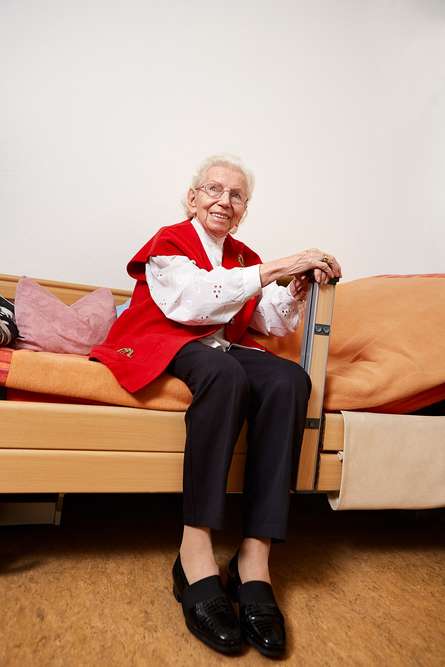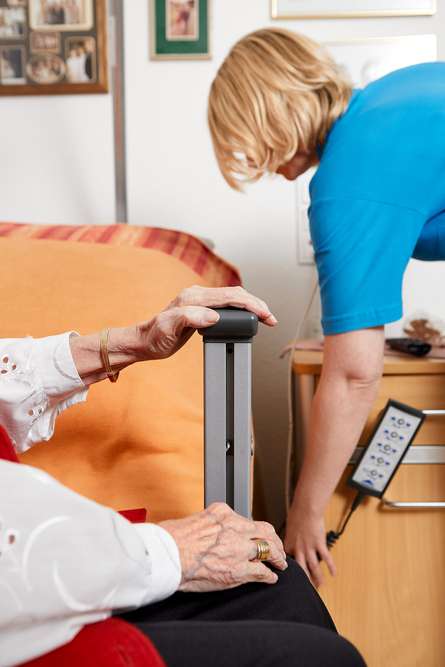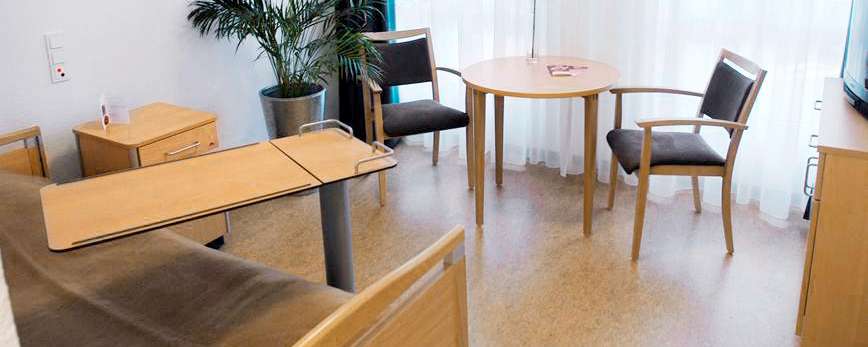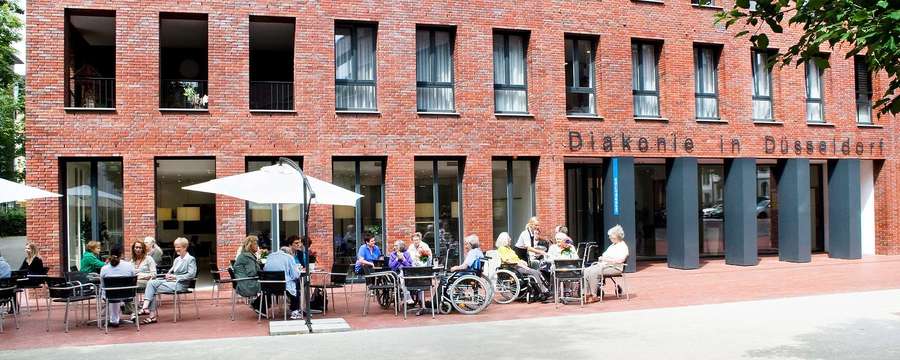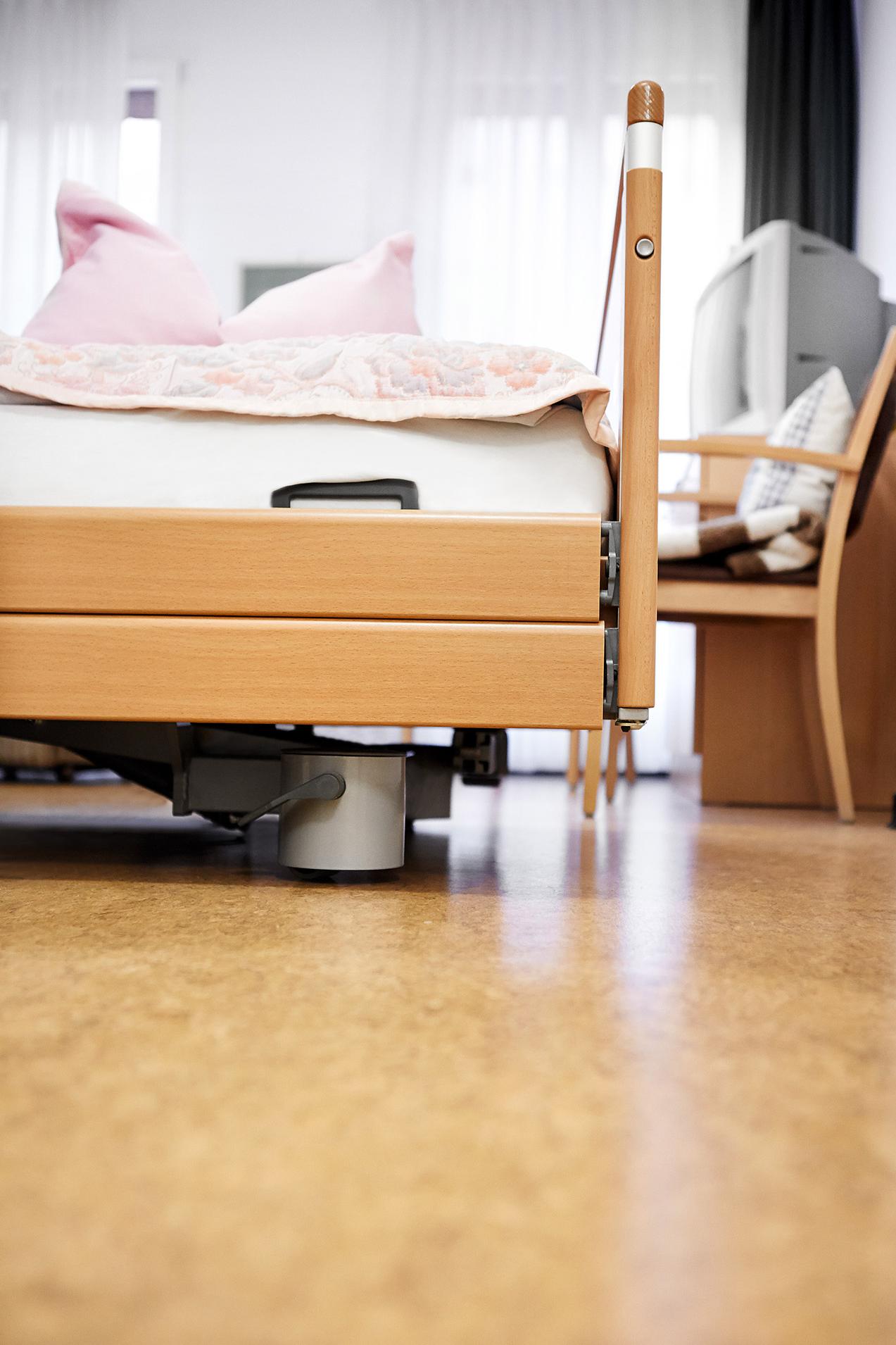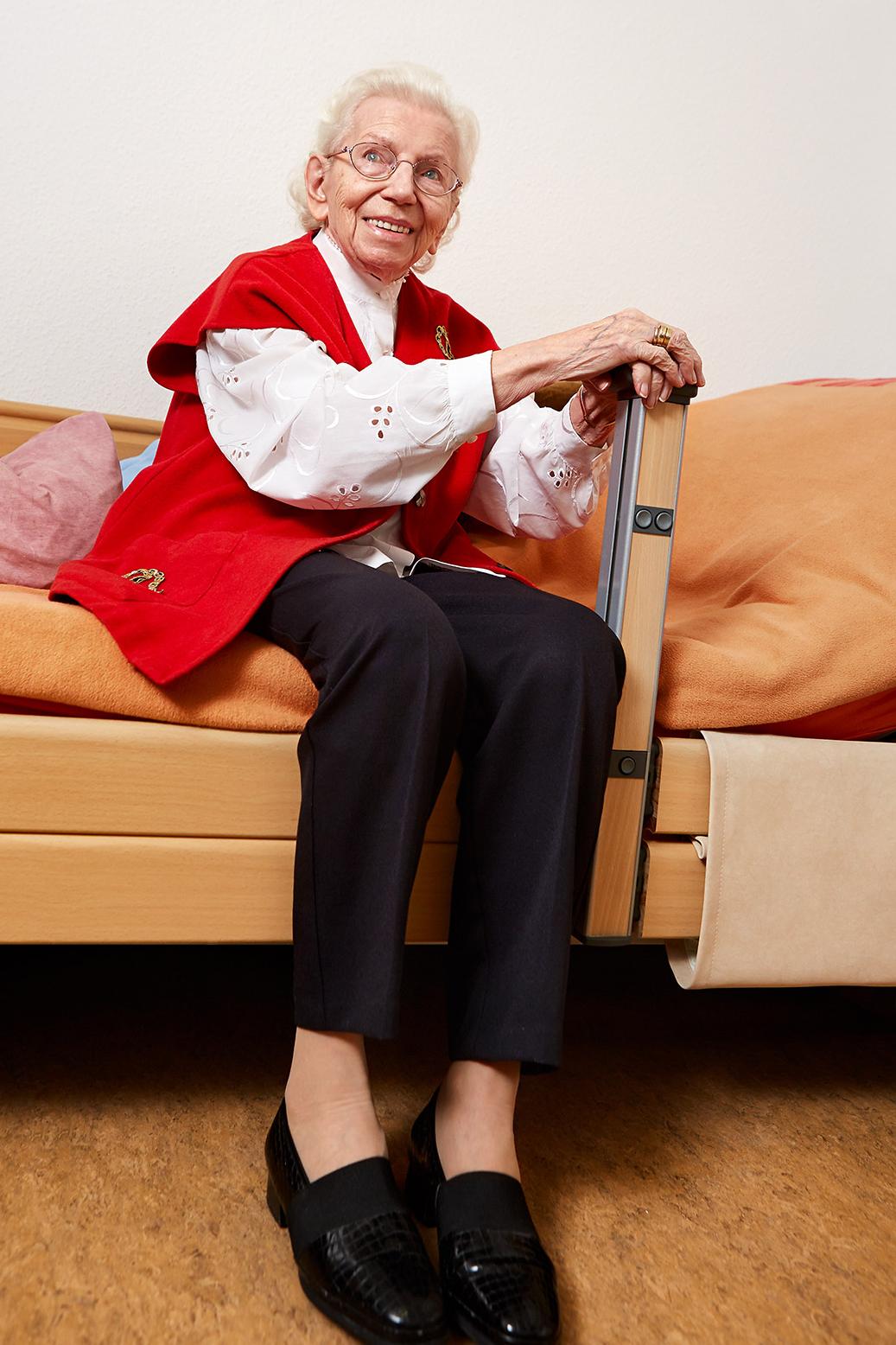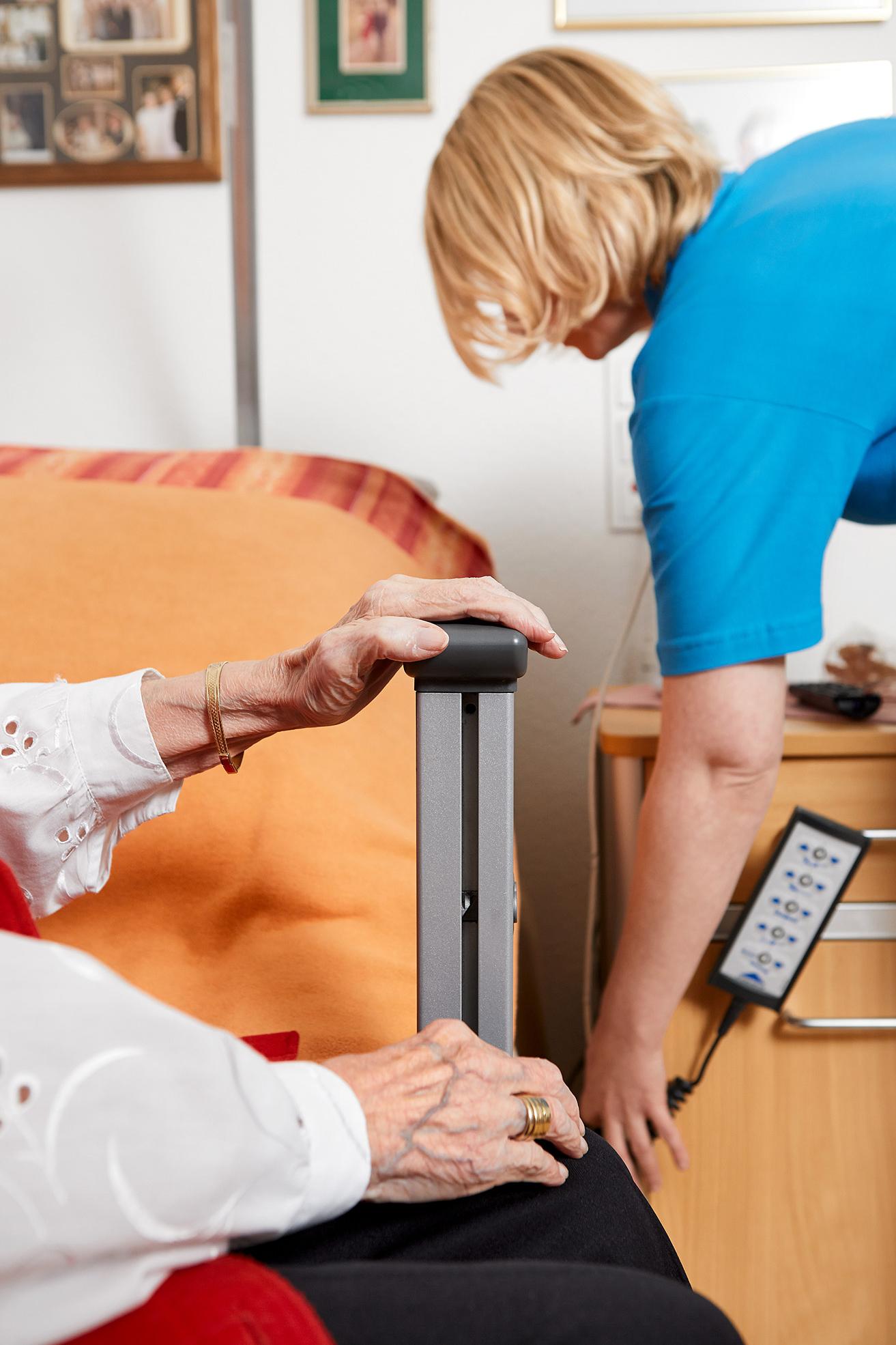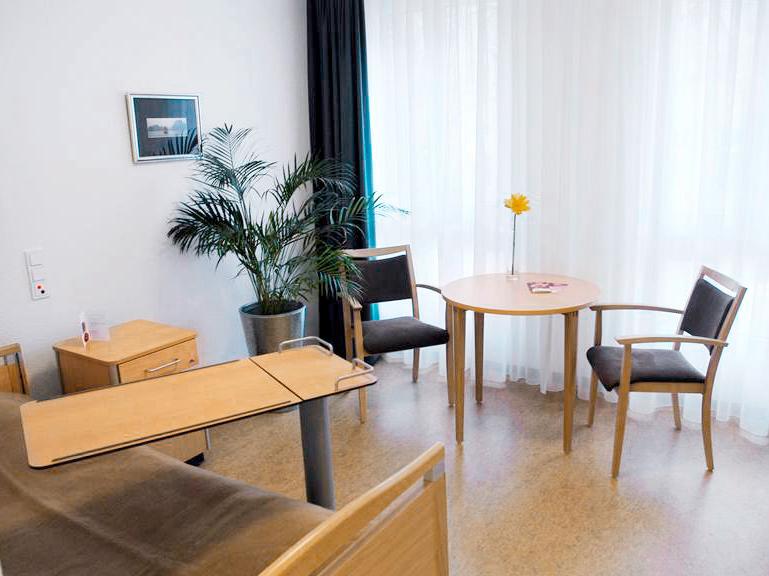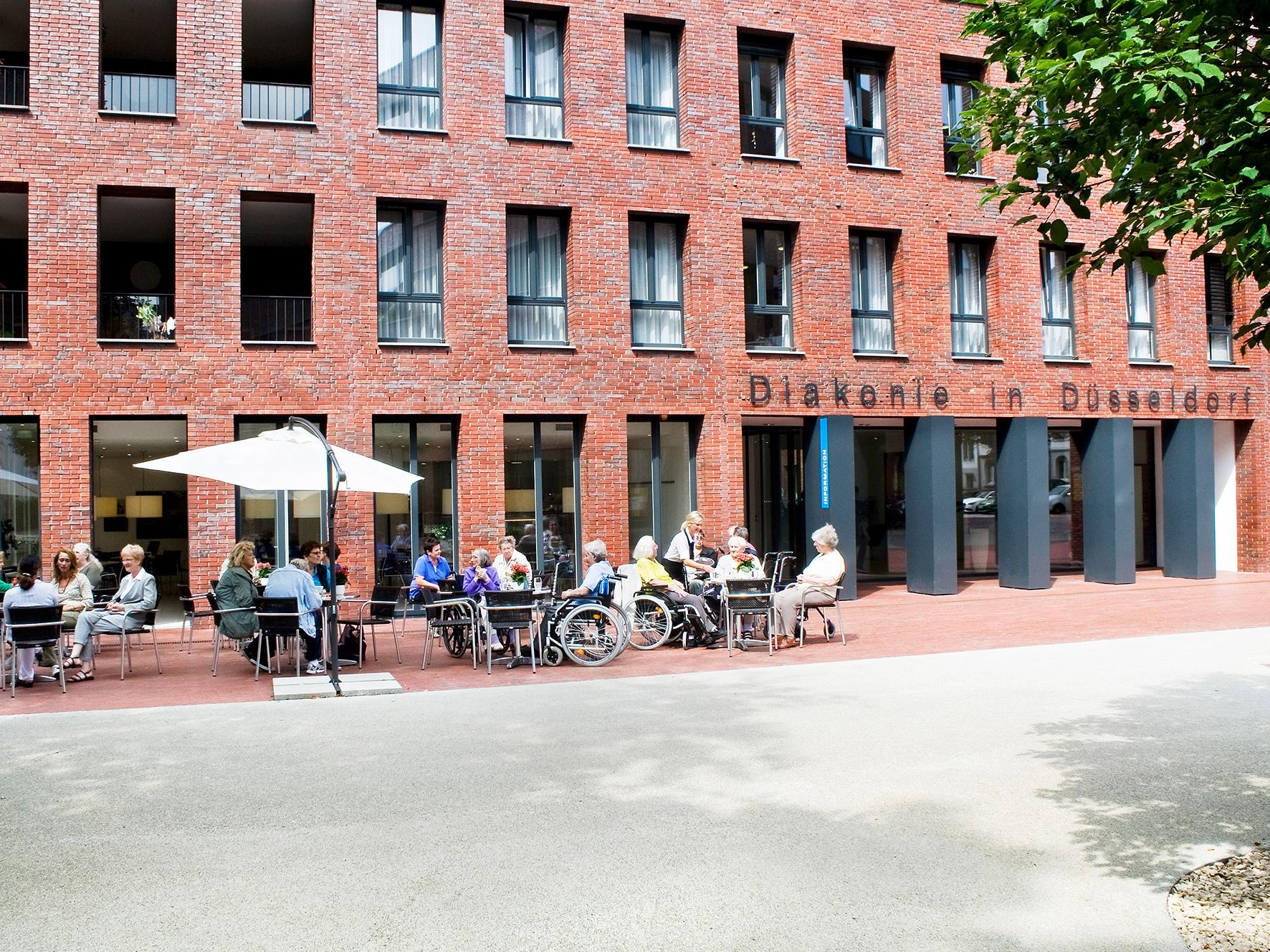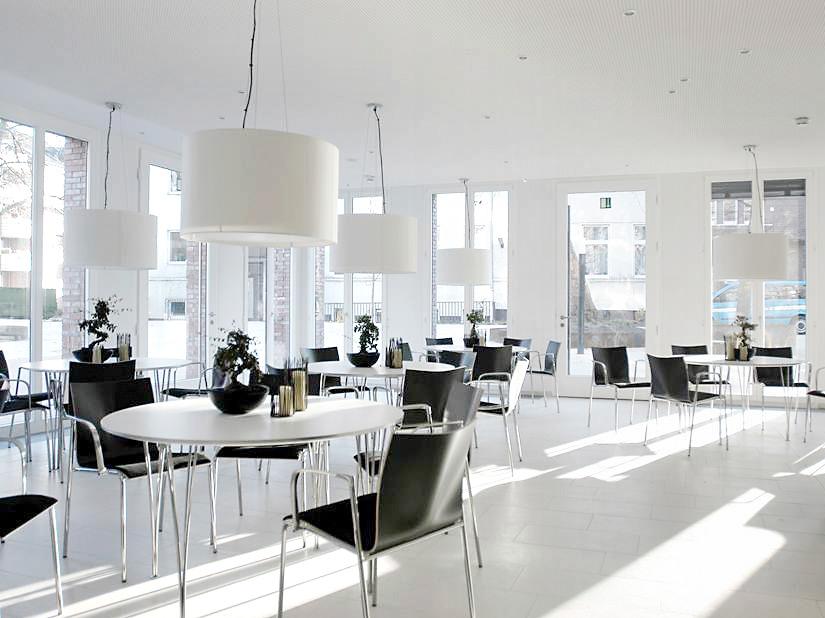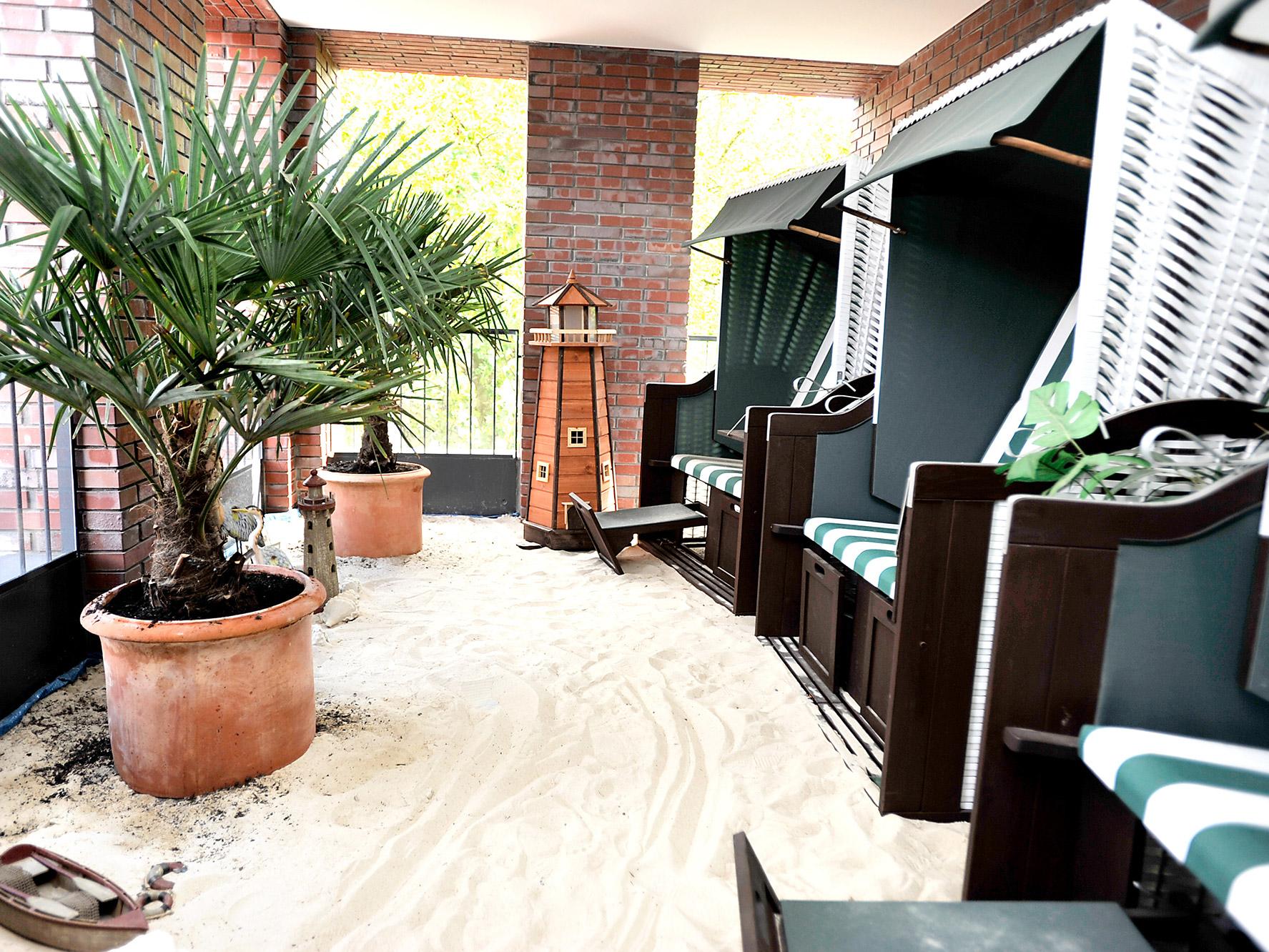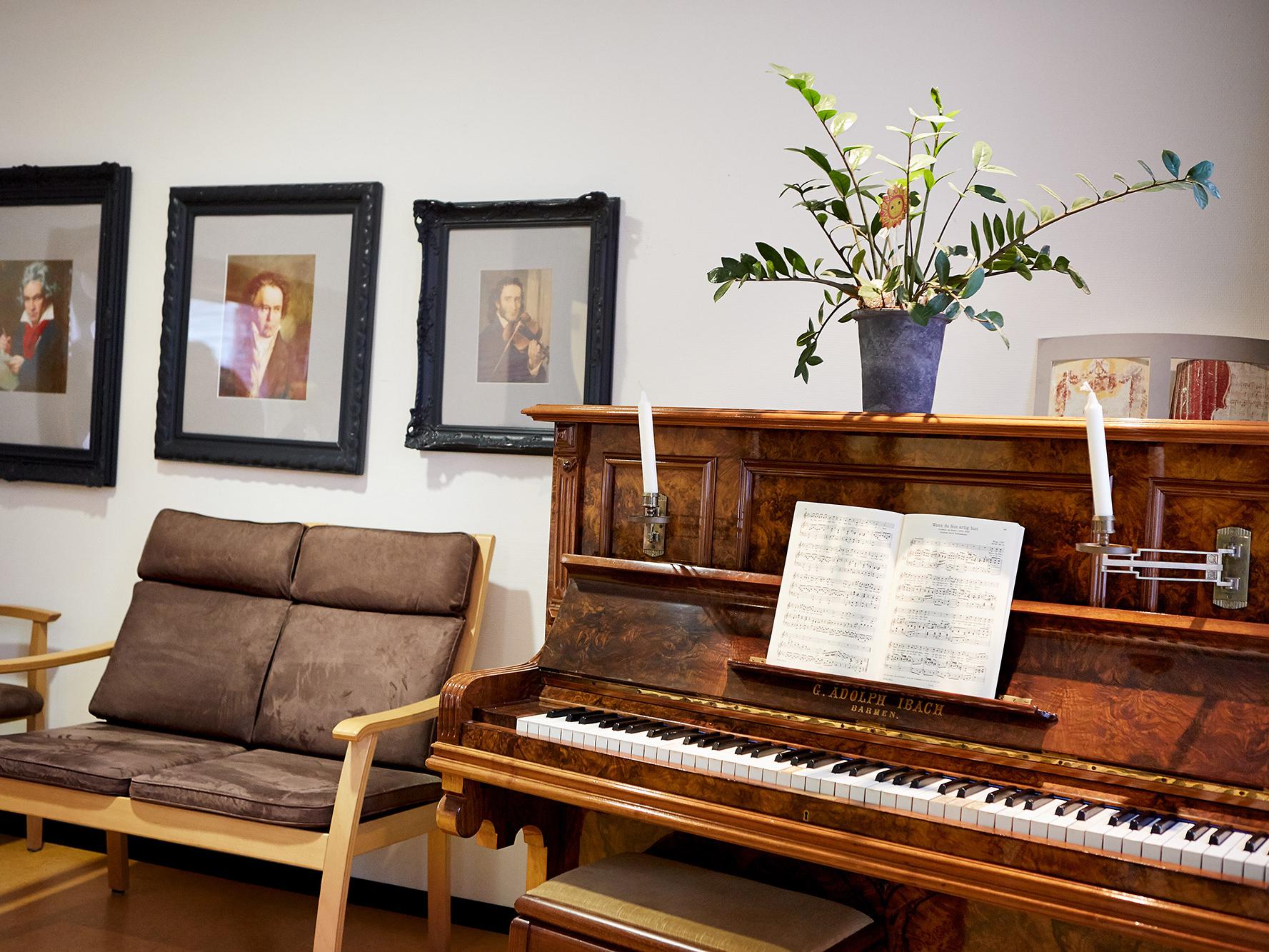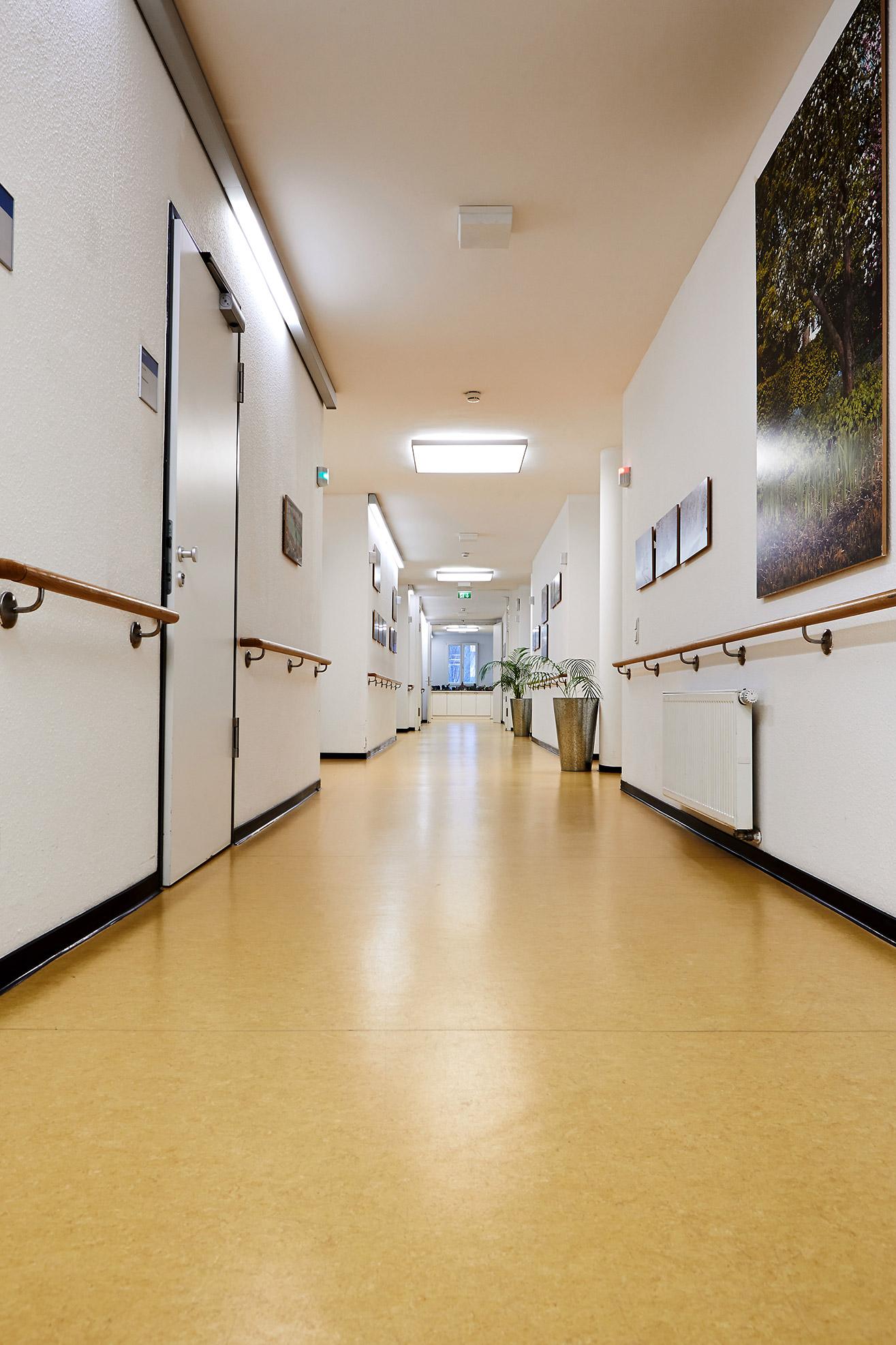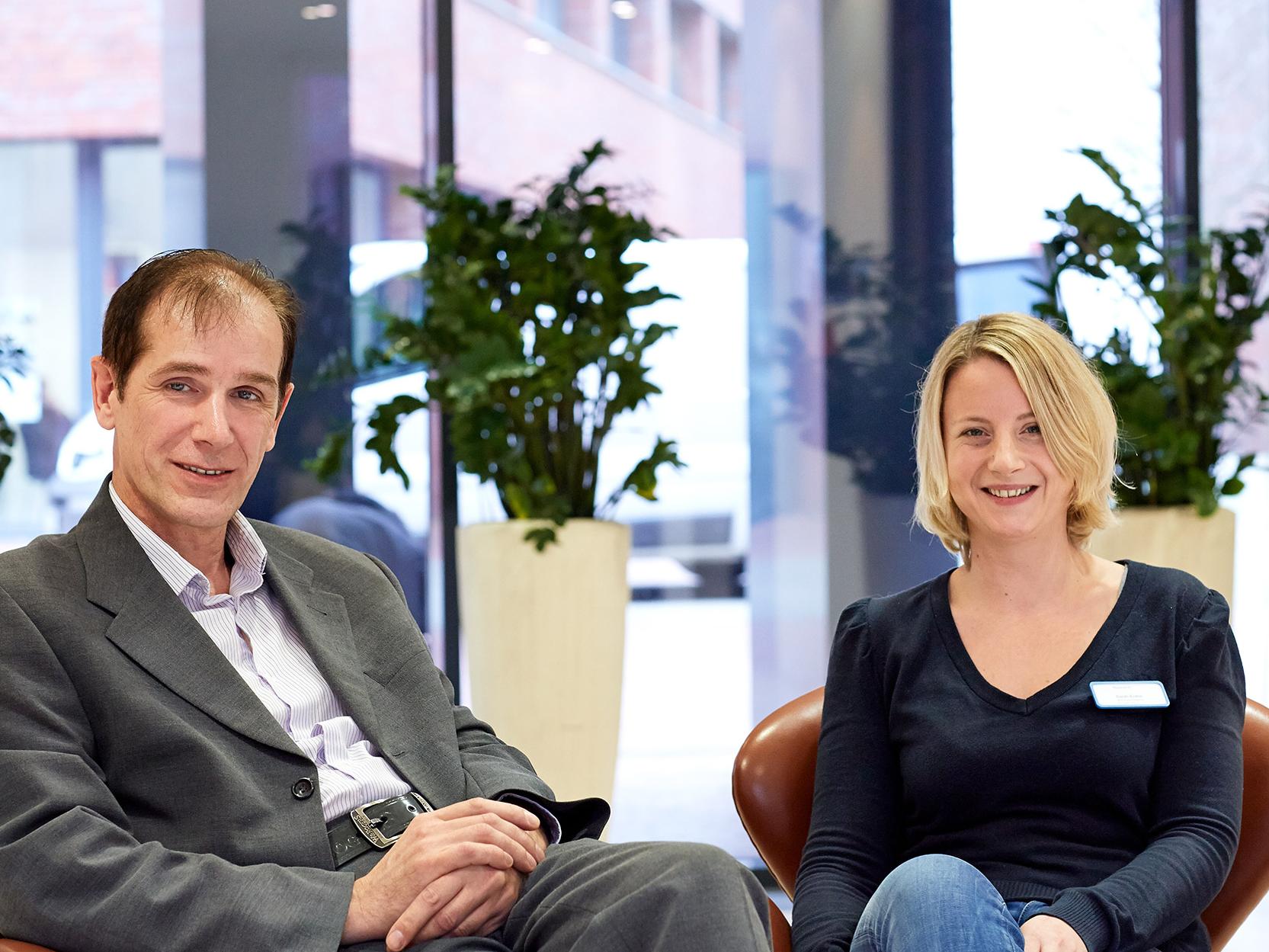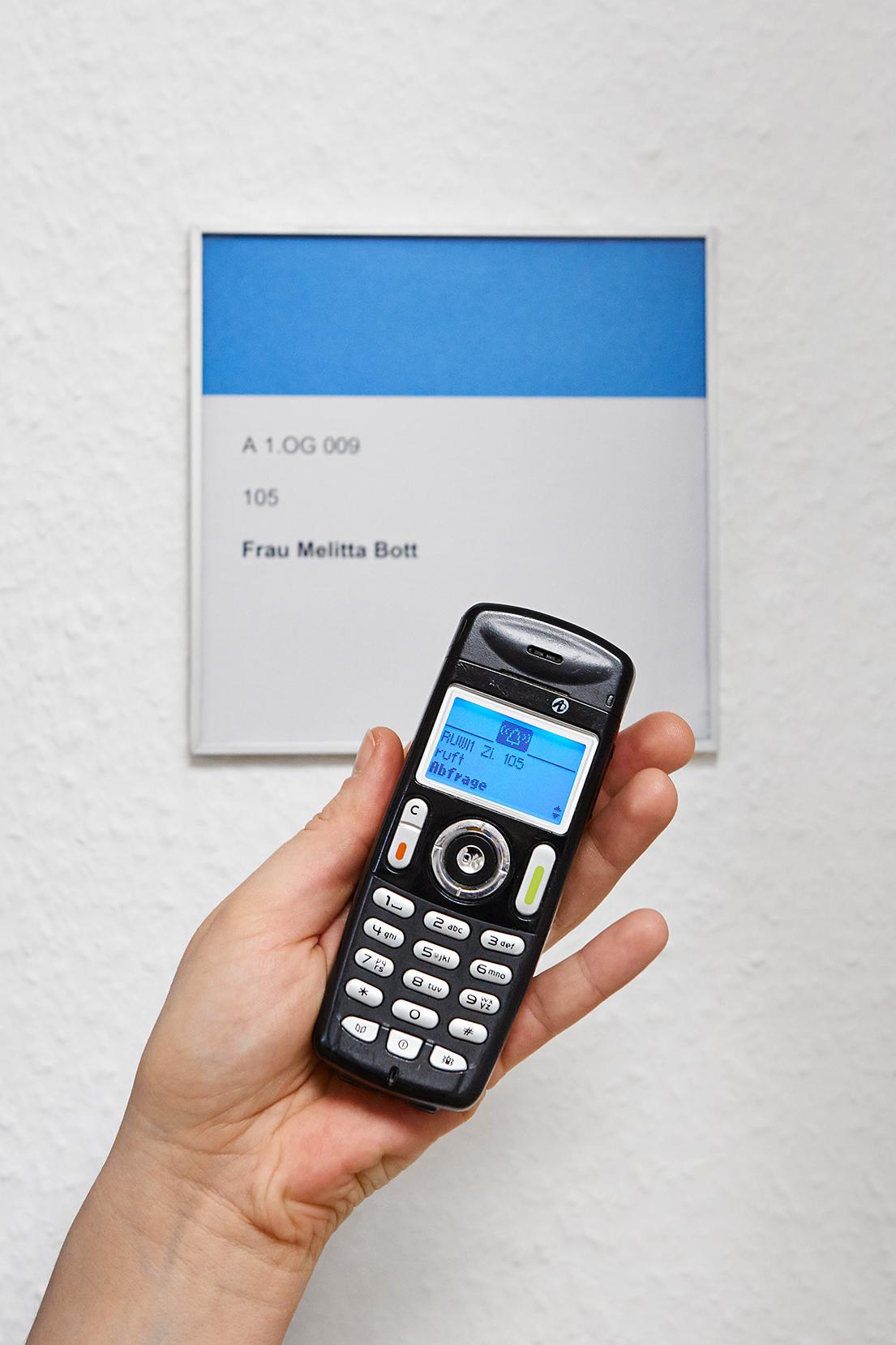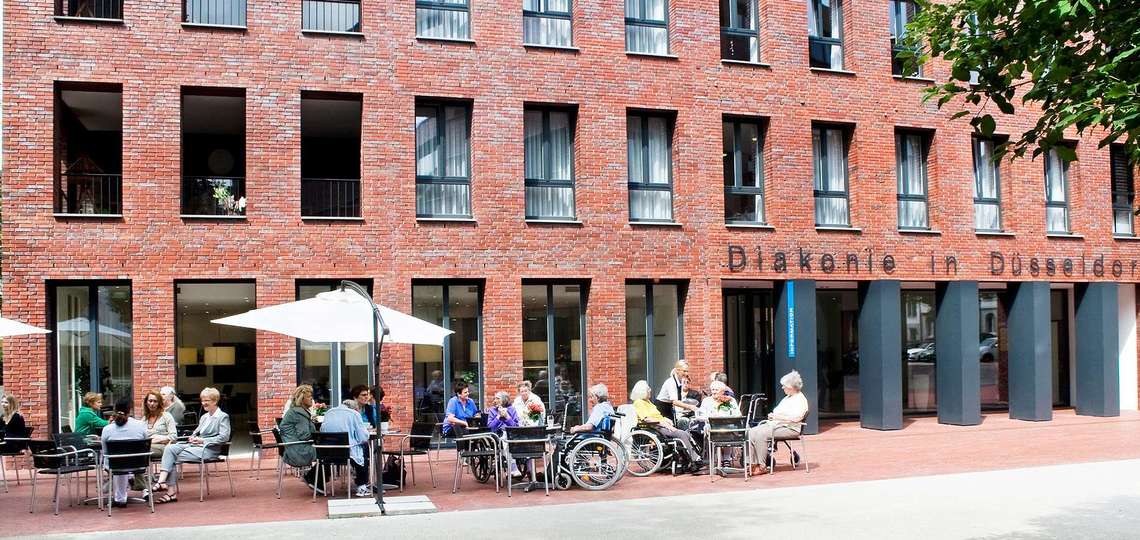
User report Diakonie Düsseldorf - Wichern - Haus
Topic series: experience from practice tune in & pick up on
Wichern-Haus is one of the first facilities in the region of North Rhine-Westphalia (NRW for short) that has been awarded the “Landesbutton Sturzpräventative Pflegeeinrichtung” (award for fall prevention at a care facility). When the facility was built in 2009, attention was paid to ensuring that the elderly would be able to safely move about independently and that restraining measures could be avoided as much as possible. Stiegelmeyer’s low-height beds also contributed to this goal. We spoke about the facility’s care philosophy and its implementation and measures in an interview with the facility manager Mr Patzelt and the residential care manager Ms Krebs.
The project "Landesbutton – Sturzpräventive Pflegeeinrichtung und Prämierung von Best-Practice-Einrichtungen in NRW” (Landesbutton award for care facilities with fall prevention and best-practice facilities in NRW) recognises nursing homes, day nursing facilities and short-term care facilities in North Rhine Westphalia for having implemented good fall prevention measures. Which measures are particularly important in your opinion?
Falls are frequently caused by dizziness, balance problems, memory loss, or movement restrictions. Medication can also negatively impact balance. Our efforts are to counteract these causes. We offer our occupants support for good balance and strong muscles with movement programmes.
Is it possible for a nursing facility to completely dispense with liberty restricting measures?
Yes. Our goal is to continuously reduce liberty restricting measures (DoLS, for short) through the use of alternative measures. Self-determination, participation and respectful interaction are absolutely central for us.
What measures are required for this task?
Firstly, we place great value on professional staff and therefore 62% of our employees are professionally trained care staff. The targeted training of our employees creates the necessary awareness of the issues. Employees are motivated to reduce DoLS and try out and document alternatives so that the occupants can lead their lives with the maximum amount of self-determination.
How quickly can successes be determined?
Within the first year, it was possible to reduce liberty restricting measures by half at Wichern-Haus. By consistently implementing this approach, we were able reduce them even further in 2012. Currently, only one resident has safety sides on her bed as fall protection. We have completely eliminated the use of mechanical measures such as restraining belts, therapy tables, body suits or protective covers.
How is that realised in terms of care beds?
After hospital discharge and after an acute event, each new admission is reviewed in terms of the care measures that will be needed. For example, for each new resident, we document answers to questions such as, "Where was the bed placed in the person’s own room?” and "What were the sleeping habits of the Senior citizen?" Often it helps to have a similar room arrangement so that the resident can turn on his usual side without falling out of bed. Even just adding safety sides at the head end of the bed can provide sufficient fall protection. The integrated middle support post on the bed is used as an aid for standing up and allows the resident to get out of bed without a barrier.
We also try to use alternative measures to DoLS. For agitated occupants, for example, a soft foam roll can replace the safety sides on a bed. These barriers are often sufficient to prevent the occupant from falling out of bed unintentionally. For safety reasons, care beds are always set to the lowest level for every "bedtime". Stiegelmeyer fall prevention mats can also offer additional protection if necessary.
For many facilities, restraints are still a standard solution for restless residents. What other causes do you think there could be for this?
An in-house review done at Wichern-Haus in 2011 revealed that elderly occupants take up to 15 different medications a day. At the same time, there is a complete lack of overview, which results in stagnating consultation and examination of any drug interactions in the prescribed medicines. Many medications can impact perception, orientation and circulation and thus increase the risk of falling.
What measures and approaches have you taken?
Wichern-Haus has initiated a project called “ReduPharm KREATIV” in cooperation with the University of Witten-Herdecke. The objective of this project is to optimise medication without negatively influencing the therapy treatment goal. The aim is to improve occupants’ medication through cooperation with the treating physicians while respecting the right to self-determination by the elderly in the interests of basic participation in their own healthcare. A partial evaluation of the project scientifically proved that it significantly improved the physical and mental state of the elderly.
What tools do you use for fall prevention, particularly on the topic of "bed"?
We had 6 Elvido beds from Stiegelmeyer retrofitted with the Out-of-Bed technology in 2012. As soon as a fall-vulnerable resident leaves the bed, the on-duty staff is automatically informed by the system. The handset activates a notification to be sent directly through the existing house phone system to the carers’ room or to the mobile telephone when the patient leaves the bed. This is an additional aspect which relieves care staff and provides greater safety for occupants.
Are there any other Stiegelmeyer products that you use?
We have chosen the Combino-Brevo bedside table without an overbed table for occupants because our focus is on maintaining and promoting patient mobility. Residents take their meals together in a dining room, not in bed. The Pleto server is only pushed to the bed in exceptional cases.
Which products could assist you with your work in the future?
Digital assistance systems should help make life easier for residents and carers in the future. Our goal is to help the elderly retain their independence as long as possible. To do that we will have to rely increasingly on the help of technical systems which relieve the workload of carers so that they can concentrate on the safety and well-being of the residents.
We are inspired by the difference in feeling in your facility compared to other care facilities.
Mobility, freedom and self-determination are at the forefront of our principles. And the dedication of our carers is particularly high. We hope that other facilities use us as a role model.
Many thanks for our interesting visit to your facility and the in-depth conversation.
This interview was conducted by Kirsten Kaawar and Christoph Prevezanos

